TECHNOLOGY
Renters face charging dilemma as U.S. cities move toward EVs
Published
2 years agoon
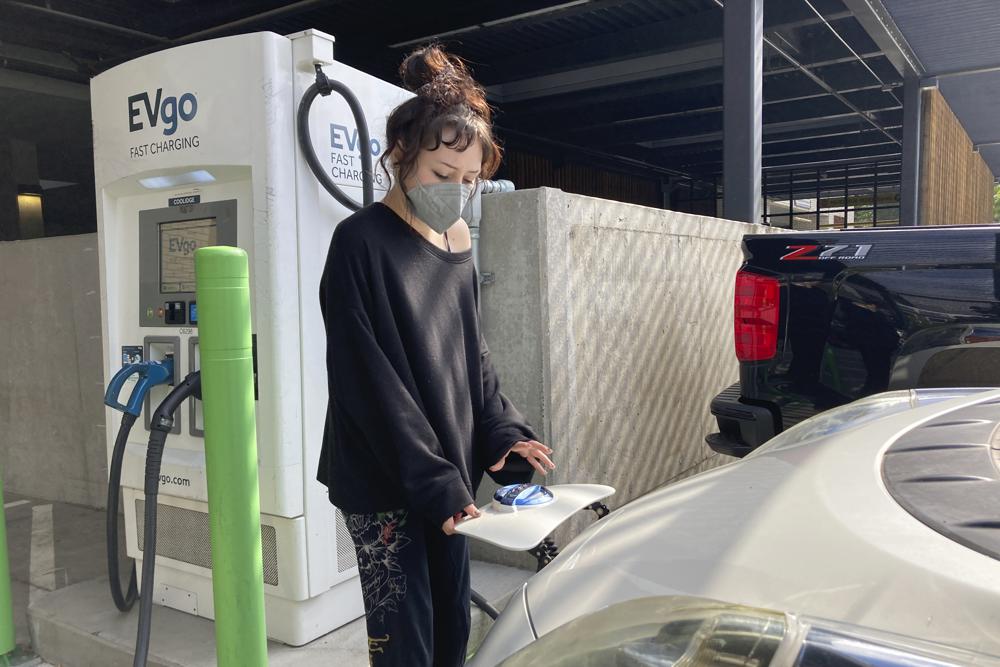
PORTLAND, Ore. (AP) — Stephanie Terrell bought a used Nissan Leaf this fall and was excited to join the wave of drivers adopting electric vehicles to save on gas money and reduce her carbon footprint.
But Terrell quickly encountered a bump in the road on her journey to clean driving: As a renter, she doesn’t have a private garage where she can power up overnight, and the public charging stations near her are often in use, with long wait times. On a recent day, the 23-year-old nearly ran out of power on the freeway because a public charging station she was counting on was busy.
“It was really scary and I was really worried I wasn’t going to make it, but luckily I made it here. Now I have to wait a couple hours to even use it because I can’t go any further,” she said while waiting at another station where a half-dozen EV drivers circled the parking lot, waiting their turn. “I feel better about it than buying gas, but there are problems I didn’t really anticipate.”
The great transition to electric vehicles is underway for single-family homeowners who can charge their cars at home, but for millions of renters like Terrell, access to charging remains a significant barrier. People who rent are also more likely to buy used EVs that have a lower range than the latest models, making reliable public charging even more critical for them.
Now, cities from Portland to Los Angeles to New York City are trying to come up with innovative public charging solutions as drivers string power cords across sidewalks, stand up their own private charging stations on city right-of-ways and line up at public facilities.
The Biden administration last month approved plans from all 50 states to roll out a network of high-speed chargers along interstate highways coast-to-coast using $5 billion in federal funding over the next five years. But states must wait to apply for an additional $2.5 billion in local grants to fill in charging gaps, including in low- and moderate-income areas of cities and in neighborhoods with limited private parking.
“We have a really large challenge right now with making it easy for people to charge who live in apartments,” said Jeff Allen, executive director of Forth, a nonprofit that advocates for equity in electric vehicle ownership and charging access.
Renters face charging woes in shift toward EVs
EVs are soaring in popularity amid tax incentives and high gas prices, but how and where to charge up remains a dilemma for renters. Cities from Portland to Los Angeles to New York are scrambling for solutions. (Oct. 25) Video by Gillian Flaccus, Eugene Garcia and Haven Daley
0 seconds of 2 minutes, 1 secondVolume 90%
“There’s a mental shift that cities have to make to understand that promoting electric cars is also part of their sustainable transportation strategy. Once they make that mental shift, there’s a whole bunch of very tangible things they can — and should — be doing.”
The quickest place to charge is a fast charger, also known as DC Fast. Those charge a car in 20 to 45 minutes. But slower chargers which take several hours, known as Level 2, still outnumber DC fast chargers by nearly four to one, although their numbers are growing. Charging an electric vehicle on a standard residential outlet, or Level 1 charger, isn’t practical unless you drive little or can leave the car plugged in overnight, as many homeowners can.
Nationwide, there are about 120,000 public charging ports featuring Level 2 charging or above, and nearly 1.5 million electric vehicles registered in the U.S. — a ratio of just over one charging port per 12 cars nationally, according to the latest U.S. Department of Energy data from December 2021. But those chargers are not spread out evenly: In Arizona, for example, the ratio of electric vehicles to charging ports is 18 to one and in California, which has about 39% of the nation’s EVs, there are 16 zero-emissions vehicles for every charging port.
A briefing prepared for the U.S. Department of Energy last year by the Pacific Northwest National Laboratory forecasts a total of just under 19 million electric vehicles on the road by 2030, with a projected need for an extra 9.6 million charging stations to meet that demand.
In Los Angeles, for example, nearly one-quarter of all new vehicles registered in July were plug-in electric vehicles. The city estimates in the next 20 years, it will have to expand its distribution capacity anywhere from 25% to 50%, with roughly two-thirds of the new power demand coming from electric vehicles, said Yamen Nanne, manager of Los Angeles Department of Water and Power’s transportation electrification program.
Amid the boom, dense city neighborhoods are rapidly becoming pressure points in the patchy transition to electrification.
In Los Angeles, the city has installed over 500 electric vehicle chargers — 450 on street lights and about 50 of them on power poles — to meet the demand and has a goal of adding 200 EV pole chargers per year, Nanne said. The chargers are strategically installed in areas where there are apartment complexes or near amenities, he said.
The city currently has 18,000 commercial chargers — ones not in private homes — but only about 3,000 are publicly accessible and just 400 of those are DC Fast chargers, Nanne said. Demand is so high that “when we put a charger out there that’s publicly accessible, we don’t even have to advertise. People just see it and start using it,” he said.
“We’re doing really good in terms of chargers that are going into workplaces but the publicly accessible ones is where there’s a lot of room to make up. Every city is struggling with that.”
Similar initiatives to install pole-mounted chargers are in place or being considered in cities from New York City to Charlotte, N.C. to Kansas City, Missouri. The utility Seattle City Light is also in the early stages of a pilot project to install chargers in neighborhoods where people can’t charge at home.
Mark Long, who lives in a floating home on Seattle’s Portage Bay, has leased or owned an EV since 2015 and charges at public stations — and sometimes charges on an outdoor outlet at a nearby office and pays them back for the cost.
“We have a small loading area but we all just park on the street,” said Long, who hopes to get one of the utility’s chargers installed for his floating community. “I’ve certainly been in a few situations where I’m down to 15, 14, 12 miles and … whatever I had planned, I’m just suddenly focused on getting a charge.”
Other cities, like Portland, are working to amend building codes for new construction to require electrified parking spaces for new apartment complexes and mixed-use development. A proposal being developed currently would require 50% of parking spaces in most new multi-family dwellings to have an electric conduit that could support future charging stations. In complexes with six spaces or fewer, all parking spaces would need to be pre-wired for EV charging.
Policies that provide equal access to charging are critical because with tax incentives and the emergence of a robust used-EV market, zero-emissions cars are finally within financial reach for lower-income drivers, said Ingrid Fish, who is in charge of Portland’s transportation decarbonization program.
“We’re hoping if we do our job right, these vehicles are going to become more and more accessible and affordable for people, especially those that have been pushed out of the central city” by rising rents and don’t have easy access to public transportation, Fish said.
The initiatives mimic those that have already been deployed in other nations that are much further along in EV adoption.
Worldwide, by 2030, more than 6 million public chargers will be needed to support EV adoption at a rate that keeps international emissions goals within reach, according to a recent study by the International Council on Clean Transportation. As of this year, the Netherlands and Norway have already installed enough public charging to satisfy 45% and 38% of that demand, respectively, while the U.S. has less than 10% of it in place currently, according to the study, which looked at electrification in 17 nations and government entities that account for more than half of the world’s car sales.
Some European cities are far ahead of even the most electric-savvy U.S. cities. London, for example, has 4,000 public chargers on street lights. That’s much cheaper — just a third the cost of wiring a charging station into the sidewalk, said Vishant Kothari, manager of the electric mobility team at the World Resources Institute.
But London and Los Angeles have an advantage over many U.S. cities: Their street lights operate on 240 volts, better for EV charging. Most American city street lights operate on 120 volts, which takes hours to charge a vehicle, said Kothari, who co-authored a study on the potential for pole-mounted charging in U.S. cities.
That means cities considering pole-mounted charging must also come up with other solutions, from zoning changes to making charging accessible in apartment complex parking lots to policies that encourage workplace fast-charging.
There also “needs to be a will from the city, the utilities — the policies need to be in place for curbside accessibility,” he said. “So there is quite a bit of complication.”
Changes can’t come fast enough for renters who already own electric vehicles and are struggling to charge them.
Rebecca DeWhitt rents a house but isn’t allowed to use the garage. For several years, she and her partner strung a standard extension cord 40 feet (12 meters) from an outlet near the home’s front door, across their lawn, down a grassy knoll and across a public sidewalk to reach their Nissan Leaf on the street.
They upgraded to a thicker extension cord and began parking in the driveway — also a violation of their rental contract — when their first cord charred under the EV load. They’re still using their home outlet and it takes up to two days to fully charge their new Hyundai Kona. As of now, their best alternative for a full charge is a nearby grocery store which can mean a long wait for one of two fast-charging stations to open up.
“It’s inconvenient,” she said. “And if we didn’t value having an electric vehicle so much, we wouldn’t put up with the pain of it.”
TECHNOLOGY
How much YouTube pays for 1 million views, according to creators
Published
12 months agoon
May 6, 2023
- YouTube creators earn money from Google-placed ads on their videos.
- A number of factors determine how much money they make, including video views.
- Creators said how much YouTube pays for 1 million views ranged from $3,400 to $30,000.
While many factors — content niche and country, among them — determine how much money a YouTuber earns on any particular video, the number of views it gets is perhaps the most significant.
When a YouTube video hits 1 million views, there’s almost a guaranteed big payday for its creator. In some cases, creators can make five-figures from a single video if it accrues that many views.
Three creators explained how much money YouTube had paid them. YouTube pays $3,400 to $30,000 for 1 million views, these creators said.
When tech creator Shelby Church spoke with Insider, she had earned $30,000 from a video about Amazon FBA (Fulfillment By Amazon). At the time, the video had accrued 1.8 million views.
Her RPM rate — or earnings per 1,000 views — are relatively high, she said, because of her content niche. Business, personal finance, and technology channels tend to earn more per view.
“YouTubers don’t always make a ton of money, and it really depends on what kind of videos you’re making,” she said.
Influencers can earn 55% of a video’s ad revenue if they are part of YouTube’s Partner Program, or YPP. To qualify for the program, they must have 1,000 subscribers and 4,000 hours of watch time on their long-form videos.
They can also make money from shorts, YouTube’s short-form video offering. In order to qualify, creators need to reach 10 million views in 90 days and have 1,000 subscribers. YouTube pools ad revenue from shorts and pays an undisclosed amount to record labels for music licensing. Creators receive 45% of the remaining money based on their percentage of the total shorts views on the platform.
You can share this story on social media:
PLEASANT MUSIC FOR YOUR CAFE, BAR, RESTAURANT, SWEET SHOP, HOME
SUITABLE MUSIC FOR YOGA LOVERS
TECHNOLOGY
Tesla employees shared sensitive images recorded by cars – Reuters
Published
1 year agoon
April 8, 2023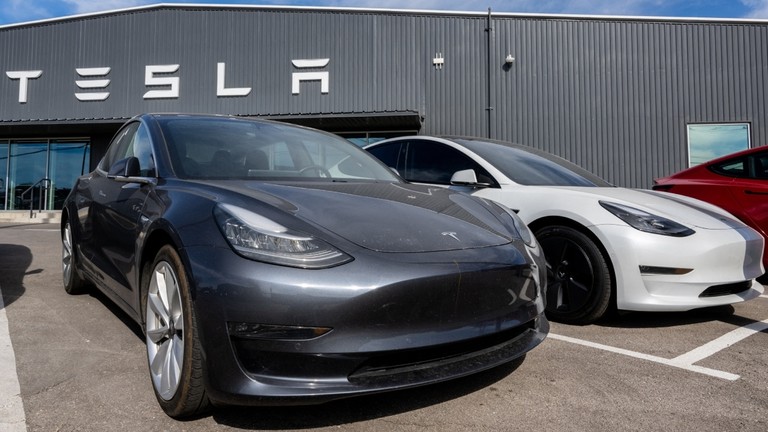
Some pictures were turned into memes and distributed through internal chats, former workers told the agency
Tesla workers shared “highly invasive” images and videos recorded by customers’ electric cars, making fun of them on internal chat groups, several former employees of Elon Musk’s company have told Reuters.
The electric-car manufacturer obtains consent from its clients to collect data from vehicles in order to improve its self-driving technology. However, the company assures owners that the whole system is “designed from the ground up to protect your privacy,” the agency pointed out in its report on Thursday.
According to nine former workers who talked to the agency, groups of employees shared private footage of customers in Tesla’s internal one-on-one chats between 2019 and 2022.
One of the clips in question captured a man approaching his electric car while he was completely naked, one of the sources said.
Tesla recalls over 360,000 cars over self-driving threat
Others featured crashes and road-rage incidents. One particular video of a Tesla hitting a child on a bike in a residential area spread around the company’s office in San Mateo, California “like wildfire,” an ex-employee claimed.
“I’m bothered by it because the people who buy the car, I don’t think they know that their privacy is, like, not respected… We could see them doing laundry and really intimate things. We could see their kids,” another former worker told the agency.
Seven former employees also told Reuters that the software they used at work allowed them to see the location where the photo or video was made, despite Tesla assuring its customers that “camera recordings remain anonymous and are not linked to you or your vehicle.”
The agency noted that it could not obtain any of the pictures or clips described by its sources, who said they were all deleted. Some former employees also told the journalists that they had only seen private data being shared for legitimate purposes, such as seeking assistance for colleagues. Tesla did not respond when approached for comment on the issue by Reuters.
You can share this story on social media!
PLEASANT MUSIC FOR YOUR CAFE, BAR, RESTAURANT, SWEET SHOP, HOME
SUITABLE MUSIC FOR YOGA LOVERS
TECHNOLOGY
Nordic nation’s military bans use of TikTok – media
Published
1 year agoon
March 27, 2023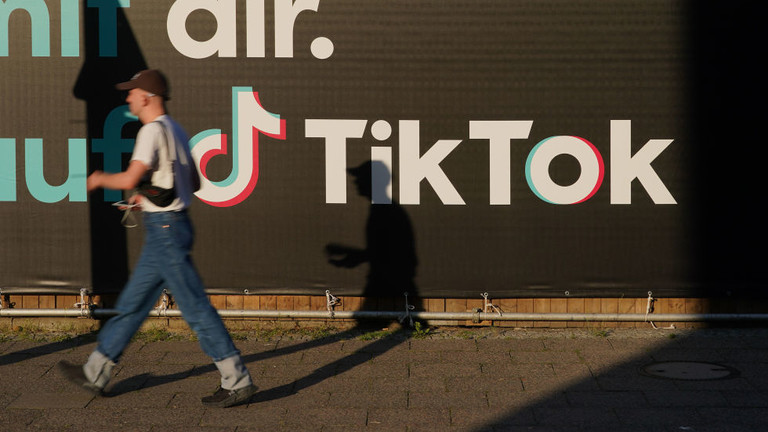
Sweden’s Defense Ministry has reportedly barred employees from using the Chinese-owned app on their work phones
Sweden’s military has reportedly cracked down on TikTok, decreeing that staff members are no longer allowed to use the Chinese-owned video-sharing application on their devices at work because of security concerns.
The Swedish Defense Ministry on Monday issued its decision, which was viewed by Agence-France Presse, banning the use of TikTok. Security concerns were raised based on “the reporting that has emerged through open sources regarding how the app handles user information and the actions of the owner company, ByteDance,” the ministry said.
The move follows similar restrictions imposed by other EU countries in recent weeks. For example, France banned government employees from downloading “recreational applications,” including TikTok, on their work phones. Norway barred use of the app on devices that can access its parliament’s computer network, while the UK and Belgium banned it on all government phones. Denmark’s Defense Ministry and Latvia’s Foreign Ministry imposed their TikTok bans earlier this month.
China responds to TikTok allegations
“Using mobile phones and tablets can in itself be a security risk, so therefore we don’t want TikTok on our work equipment,” Swedish Defense Ministry press secretary Guna Graufeldt told AFP.
The US, Canada and New Zealand previously banned their federal employees from using TikTok on government-issued devices, citing fears of ByteDance’s ties to the Chinese Communist Party (CCP). Members of Congress may try to ban the app from the US market altogether after testimony at a congressional hearing last week by TikTok CEO Shou Zi Chew failed to ease their security concerns. “They’ve actually united Republicans and Democrats out of the concern of allowing the CCP to control the most dominant media platform in America,” US Representative Mike Gallagher said on Sunday in an ABC News interview.
Chinese officials have denied claims that TikTok is used to collect the personal data of its American users. “The Chinese government has never asked and will never ask any company or individual to collect or provide data, information or intelligence located abroad against local laws,” Chinese Foreign Ministry spokeswoman Mao Ning told reporters last week. She added that Washington has attacked TikTok without providing any evidence that it threatens US security.
PLEASANT MUSIC FOR YOUR CAFE, BAR, RESTAURANT, SWEET SHOP, HOME
SUITABLE MUSIC FOR YOGA LOVERS



Global debt balloons to record highs

German military to sell tons of toilet paper

First female Saudi astronaut heads to space

Nigeria takes step to combat fuel shortages

US will default if debt deal fails – treasury secretary

Village People demand Trump stop using their music

Hollywood star pulls out of hosting awards show amid strike

Rock icon slams German authorities

Agatha Christie novels chopped by ‘sensitivity readers’ – media

Marvel star back in training after breaking over 30 bones

Turkish minister escapes fire blast (VIDEO)

Trump savages pop star’s Super Bowl performance

Alec Baldwin sued by Ukrainian family of slain cinematographer

Duran Duran stumbles, Dolly Parton rolls into Rock Hall

Sweden probes possible plot behind Russian pipeline leaks

FINANCE


Global debt balloons to record highs
It’s now $45 trillion higher than its pre-pandemic level and is expected to continue growing rapidly, a top trade body...


Nigeria takes step to combat fuel shortages
The West African country has built a giant oil refinery to cover domestic demand Nigeria will commission its new Dangote...


US will default if debt deal fails – treasury secretary
The current borrowing limit is a constraint on Washington’s ability to meet its obligations, Janet Yellen insists America’s chances of...


Facebook parent Meta fined €1.2 billion by Irish watchdog
The American tech company has been accused of violating EU data privacy rules US tech giant Meta has been hit...


UK’s business with sanctioned country booming
Trade between Britain and Iran has reached the highest level in a decade, according to official data, apparently having been...

POLITICS


Erdogan election defeat would be ‘revenge’ – Syrian Kurds
The YPG claims the Turkish president failing to win another term would be payback for Ankara’s counter-terrorism operations in Syria...


Chinese special envoy meets with Zelensky
Li Hui visited Kiev to share Beijing’s views on a political settlement to the Ukraine crisis Ukrainian President Vladimir Zelensky...


Pakistan’s top court orders release of former PM Imran Khan
Pakistan’s Supreme Court has ordered the release of former prime minister Imran Khan, whose arrest earlier this week triggered deadly...


Kamala Harris to run AI taskforce
The US vice president will ask AI execs to evaluate the safety and fairness of their models US Vice President...
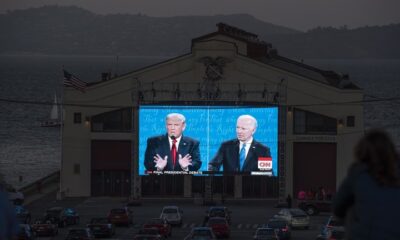

Most Americans want to move on from Biden and Trump – poll
70% of respondents said the incumbent shouldn’t bid for office in 2024, with that figure 60% for the Republican former...

OPINION


Disgraced ex-PM Liz Truss seeks to ruin any hopes for normal UK-China ties
The former premier’s Taiwan trip is nothing but a provocation for Beijing to lash out at London, sinking any constructive...


India facing challenge to steer SCO agenda away from Western-dominated frameworks
The Shanghai Cooperation Organisation is looking at ways to address the most pressing global issues without being a disruptive influence...


China isn’t the biggest threat to Italy’s prosperity
Rome is considering leaving the Belt and Road Initiative in a move which will place virtue signaling to other Western...


Meet the Czech lawyer who rallies thousands to shake up the EU establishment
In mid-April, a fledgling political party that recently formed in the Czech Republic called Pravo Respekt Odbornost (Law Respect Expertise;...


UK shows signs of good will to China, but it’s not the one calling the shots in this relationship
The British foreign secretary says antagonizing Beijing goes against London’s ‘national interests’, but Washington has other ideas British Foreign Secretary...

LIFE


conic Smiths bassist dies aged 59
The bassist with legendary English rock band The Smiths, Andy Rourke, has died at the age of 59, the group’s...


Village People demand Trump stop using their music
A viral video emerged last week of Donald Trump dancing to a Village People song at his Florida estate Village...


Hollywood star pulls out of hosting awards show amid strike
Drew Barrymore is stepping down as host of this year’s MTV Movie & Music Awards, due to be held on...


Mexico condemns US ‘interference’ in drug war
The DEA’s infiltration of the Sinaloa Cartel without state permission amounts to espionage, the Mexican president says Mexican President Andres...
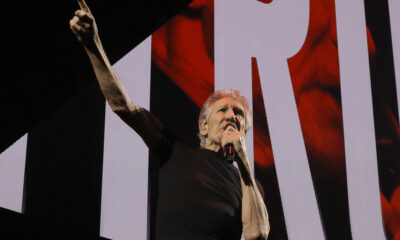

Rock icon slams German authorities
Pink Floyd co-founder Roger Waters criticized the city of Frankfurt for canceling his concert and vowed to take legal action...



Trending
-

 TECHNOLOGY12 months ago
TECHNOLOGY12 months agoHow much YouTube pays for 1 million views, according to creators
-

 FINANCE11 months ago
FINANCE11 months agoFacebook parent Meta fined €1.2 billion by Irish watchdog
-

 LIFE12 months ago
LIFE12 months agoHollywood star pulls out of hosting awards show amid strike
-

 LIFE11 months ago
LIFE11 months agoconic Smiths bassist dies aged 59
-
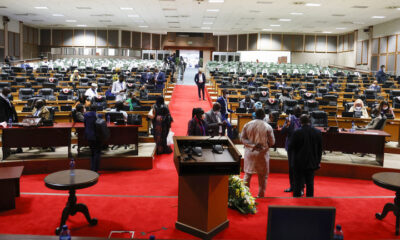
 NEWS11 months ago
NEWS11 months agoKenya supports creation of pan-African court
-

 FINANCE11 months ago
FINANCE11 months agoUS will default if debt deal fails – treasury secretary
-

 FINANCE11 months ago
FINANCE11 months agoGlobal debt balloons to record highs
-
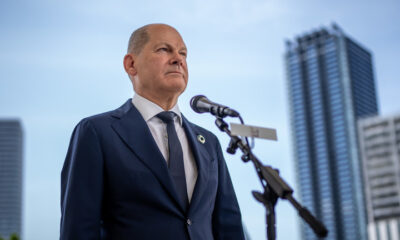
 WAR11 months ago
WAR11 months agoUkraine won’t join NATO anytime soon – Scholz




